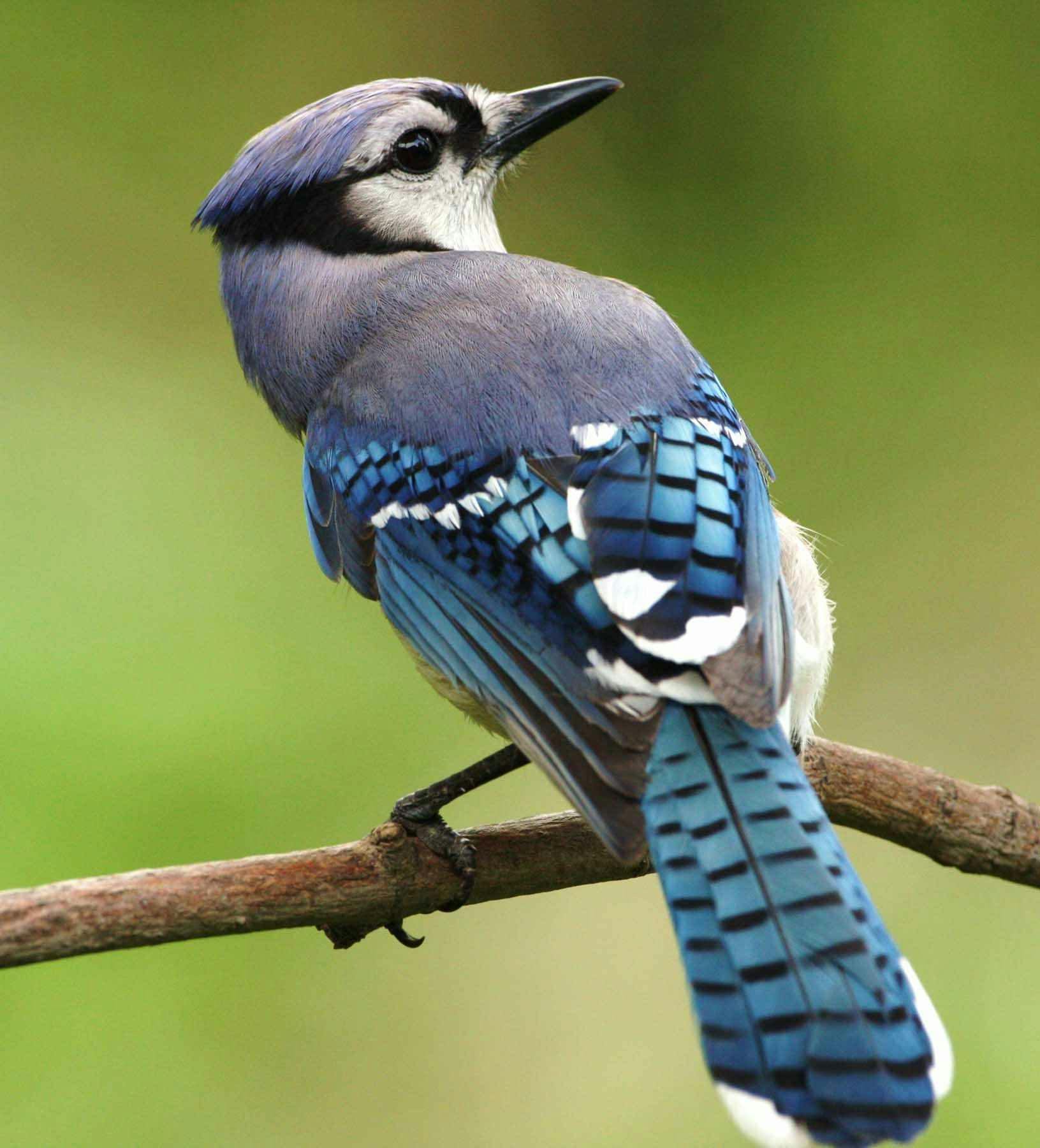
Welcome, fellow enthusiasts, to an exclusive tour of some of nature’s most visually striking and dynamically performing avian marvels: the jays. Much like the precision engineering and captivating aesthetics that define a high-performance vehicle, each jay species showcases a unique blend of vibrant design, intricate behavior, and remarkable adaptability that truly sets it apart. These aren’t just birds; they are feathered machines, meticulously crafted by evolution to thrive in diverse environments, from dense forests to suburban backyards.
Our journey through this ‘treasure trove’ of corvid brilliance will unveil the detailed craftsmanship behind their plumage, the finely tuned mechanics of their foraging strategies, and the powerful ‘engines’ of their vocalizations. We’ll examine how their physical ‘specifications’ translate into their ‘on-road’ performance in the wild, from their flight dynamics to their social interactions. Prepare to have your perceptions challenged as we delve into the authoritative details and enthusiast-focused insights that highlight what makes each of these species an engineering marvel in its own right.
So, buckle up and prepare for an immersive experience as we begin our exploration of these extraordinary avian gems. We’ll be scrutinizing everything from their distinctive crests and brilliant color schemes to their astonishing intelligence and complex social structures. This first segment introduces you to seven prominent species, each a testament to the incredible diversity and resilience found within the Corvidae family.
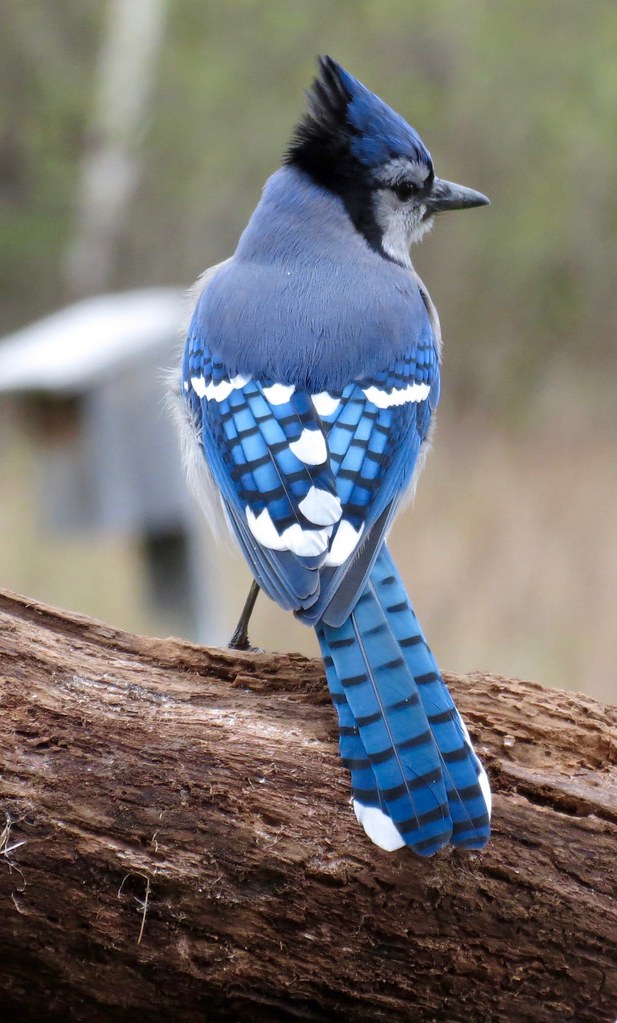
1. **Blue Jay**For many across the Midwest and East, the Blue Jay (Cyanocitta cristata) is often the first, and most unforgettable, encounter with the vibrant world of jays. Instantly recognizable, this common large songbird flaunts a striking palette of brilliant blue markings, accentuated by white wing-bars and a jaunty crest of feathers that commands attention. Its appearance alone is a testament to nature’s bold design, making it a standout in any landscape it graces, whether it’s a dense forest canopy or a bustling backyard feeder.
Beyond its visual appeal, the Blue Jay is a powerhouse of sound. Its presence is often announced by a loud, characteristic “jayyy jayyy” call, a vocal signature that is as memorable as its plumage. However, their vocal repertoire is surprisingly varied, including clicks, peeps, ‘caws,’ and whistles. During courtship, these noisy birds even exhibit a gentle fluted song, revealing a softer side to their often-assertive demeanor. This blend of strong visual design and versatile acoustic performance truly highlights their dynamic capabilities.
In terms of behavior, Blue Jays are known for their social nature, frequently traveling in family groups. They exhibit a preference for platform or tray feeders, a design choice that facilitates a quick grab of peanuts or sunflower seeds and an even quicker exit, a practical aspect of their efficient foraging strategy. While some perceive them as “bullies” at feeders due to their dominant presence, their preference for nuts like acorns and beechnuts means that a well-stocked feeder is often an invitation they cannot resist. It’s a testament to their adaptability that they thrive in both natural forests, especially near oak trees, and human-altered suburban environments.
Their diet is impressively broad, reflecting their omnivorous nature. Besides their beloved acorns and other nuts, Blue Jays readily consume insects, seeds, and grains. There’s a darker, yet natural, side to their feeding habits as well, as they are known to occasionally take eggs or nestlings from other birds’ nests, a testament to their opportunistic survival instincts. A fun fact that adds to their intriguing character is their penchant for playing with shiny objects like aluminum or bottle caps, carrying them around, dropping them, and picking them up—a curious behavior for such a robust species.
Read more about: 15 Mind-Blowing Animal Facts You Absolutely Won’t Believe
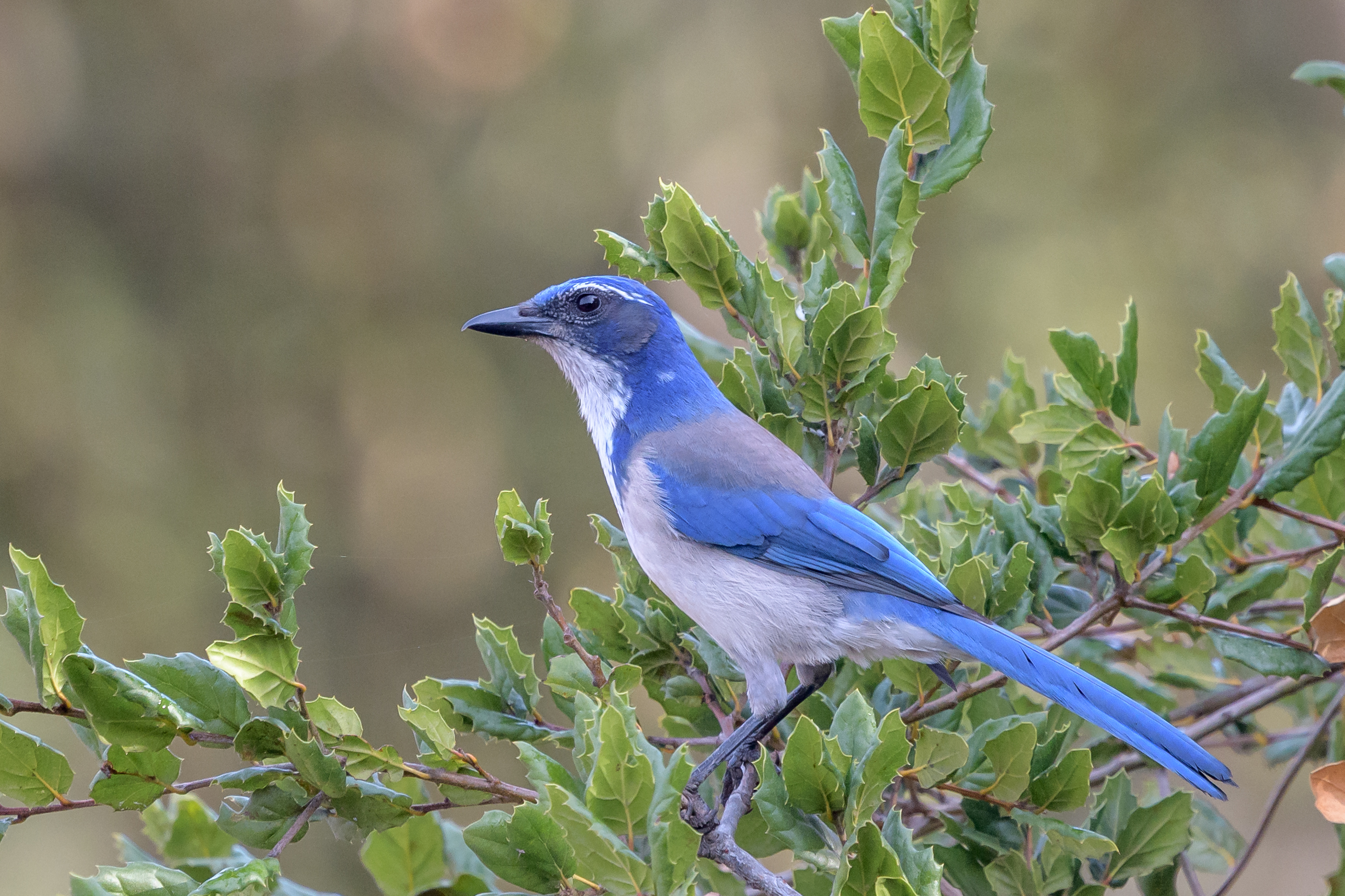
2. **California Scrub-Jay**Venturing west, particularly along the Pacific Coast from British Columbia down to Baja California, one frequently encounters the California Scrub-Jay (Aphelocoma californica). These are large songbirds, visually distinct with their long tails, whitish undersides, and rich blue and gray backs, further adorned by a bright blue breast band. While visually similar to their inland relatives, the Woodhouse’s Scrub-Jay, the California species typically boasts more vivid colors, showcasing a refined aesthetic in its natural design.
These crestless jays are a common sight across lower elevations of the West, thriving in scrubby areas, oak woodlands, and even suburban yards and parks. Their adaptability to various habitats highlights their robust construction and flexible operational parameters. They are resident birds, remaining in their territories year-round, which speaks to their resilience and ability to find resources consistently. Their size, larger than a robin but smaller than a crow, positions them perfectly for navigating both open and dense foliage.
Like many of their cousins, California Scrub-Jays are omnivorous, demonstrating a versatile dietary ‘performance’. Their menu includes insects and fruit during the spring and summer, transitioning to seeds and nuts, with a particular fondness for acorns, in the fall and winter. They are renowned for their food-caching behavior, typically burying their favorite acorns for later retrieval, an intelligent strategy for resource management. Their nests, cup-shaped and meticulously built by both parents from twigs and moss, are usually hidden in oak trees, a testament to their precise architectural instincts.
Their vocalizations are another key feature of their ‘performance profile.’ They are known for making scolding cries, which serve as an effective alarm system, but they also sing sweet, quiet, musical songs when with their mate, showcasing a wide emotional range in their acoustic output. A fascinating fun fact about these birds comes from the University of California – Davis, noting that California Scrub-Jays will screech over the body of a dead jay, inviting others to join, a somber ritual that can last up to half an hour, revealing a complex social response to loss within their species.
Read more about: The Curated Collection: Unpacking North America’s Most Distinctive Jay Species – An Exclusive Ornithological Showcase

3. **Steller’s Jay**High in the mountainous evergreen forests of the Western United States and Canada, the Steller’s Jay (Cyanocitta stelleri) presents itself as a true icon of the arboreal environment. This large songbird is unmistakably characterized by its striking black triangular crest, which stands proudly atop its head, and the black coloration that extends over its head, chest, and back, contrasting sharply with the deep blue of the rest of its body. Small white or blue spots on its forehead add subtle detailing to its otherwise bold and dark design, making it an imposing and beautiful specimen.
Common in its chosen domain, the Steller’s Jay typically sticks to exploring the higher canopies, a testament to its agility and aerial ‘performance’. However, these opportunistic birds are not shy about swooping into backyards to visit feeders, or even to nibble on unattended picnic lunches at campgrounds and picnic tables, highlighting their adaptability and readiness to exploit available resources. Their range extends throughout western US states, western Canada, Mexico, and Central America, a broad footprint for such a distinctive species.
Their diet is as varied as their habitats, showcasing a remarkably flexible foraging ‘engine’. Steller’s Jays will eat most things they can forage for, including insects, seeds, nuts, berries, and even eggs and nestlings from other birds. This broad palette underscores their survival prowess in diverse ecological niches. They travel in flocks, a social behavior that enhances their foraging efficiency and provides collective security, except when nesting, at which point pairs become more territorial.
Audibly, Steller’s Jays are equally impressive. They are known for their quick “shek-shek-shek” calls, alongside harsher ‘kaw’ sounds, fast two-toned calls, peeps, and guttural expressions. An intriguing aspect of their vocal performance is their ability to mimic other noises, including other bird species, and even artificial sounds like sprinklers and alarms. Their nests, sturdy constructions of leaves and plant material held together with mud and lined with soft pine needles, are usually found near the top of conifer trees, a testament to their engineering and insulation skills. Attracting them to your backyard is often as simple as offering peanuts and suet, materials they find highly appealing.
Read more about: The Curated Collection: Unpacking North America’s Most Distinctive Jay Species – An Exclusive Ornithological Showcase
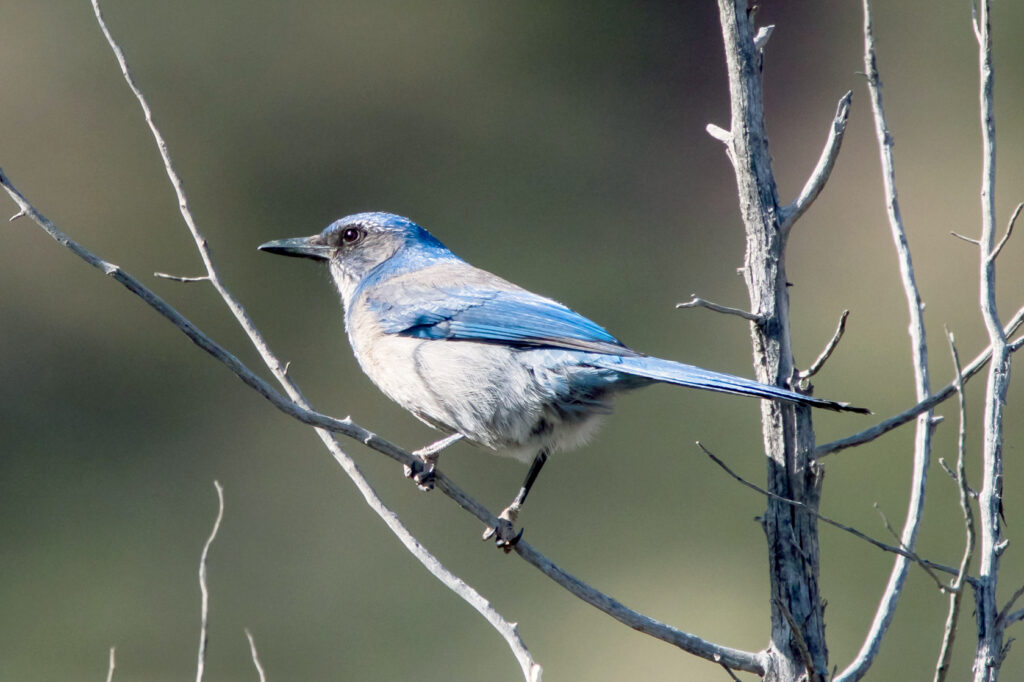
4. **Woodhouse’s Scrub-Jay**As we delve deeper into the Western United States, particularly the inland Southwest, we encounter the Woodhouse’s Scrub-Jay (Aphelocoma woodhouseii), often referred to as the “Blue-Jays of the Southwest.” This species exhibits a lovely blue and gray coloring, characterized by light blue and dark gray on the back, and a lighter gray underneath. Their tails are notably long and blue, contributing to their elegant profile. Compared to their coastal cousins, the California Scrub-Jays, they possess a duller coloration and a less pronounced necklace, and they distinctively lack the crests seen on Blue Jays and Steller’s Jays.
These crestless birds are residents year-round in the inland southwest US states and Mexico, making their home in wooded areas dominated by pinyon-juniper and scrubby environments. Their habitat preference speaks to their specialized adaptations for the arid and semi-arid landscapes of the region, where they efficiently navigate the unique flora. They demonstrate a robust ‘performance’ in these challenging environments, relying on their keen senses and learned behaviors to survive.
In terms of diet, Woodhouse’s Scrub-Jays are adept omnivores, showcasing a seasonal shift in their foraging strategy. During the summer, insects and fruit constitute the majority of their diet, providing essential nutrients and hydration. As winter approaches, their menu transitions to nuts and seeds, particularly those readily available in their pinyon-juniper habitats, highlighting their flexible ‘fuel’ requirements. This seasonal adaptability is a key to their success in environments with fluctuating resource availability.
Nesting for the Woodhouse’s Scrub-Jay involves fairly simple platforms constructed from twigs and lined with moss and grass, often placed discreetly within their preferred scrubby vegetation. While detailed descriptions of their specific vocalizations beyond a general mention of “sounds” are limited, their presence is keenly felt through their active foraging and social dynamics. A particularly intriguing “fun fact” about these jays is their reputation as thieves; they are known to steal food from other birds’ stores, especially preying on the granary tree hoards of Acorn Woodpeckers. This opportunistic behavior underscores their cleverness and resourcefulness in securing sustenance.
Read more about: The Curated Collection: Unpacking North America’s Most Distinctive Jay Species – An Exclusive Ornithological Showcase
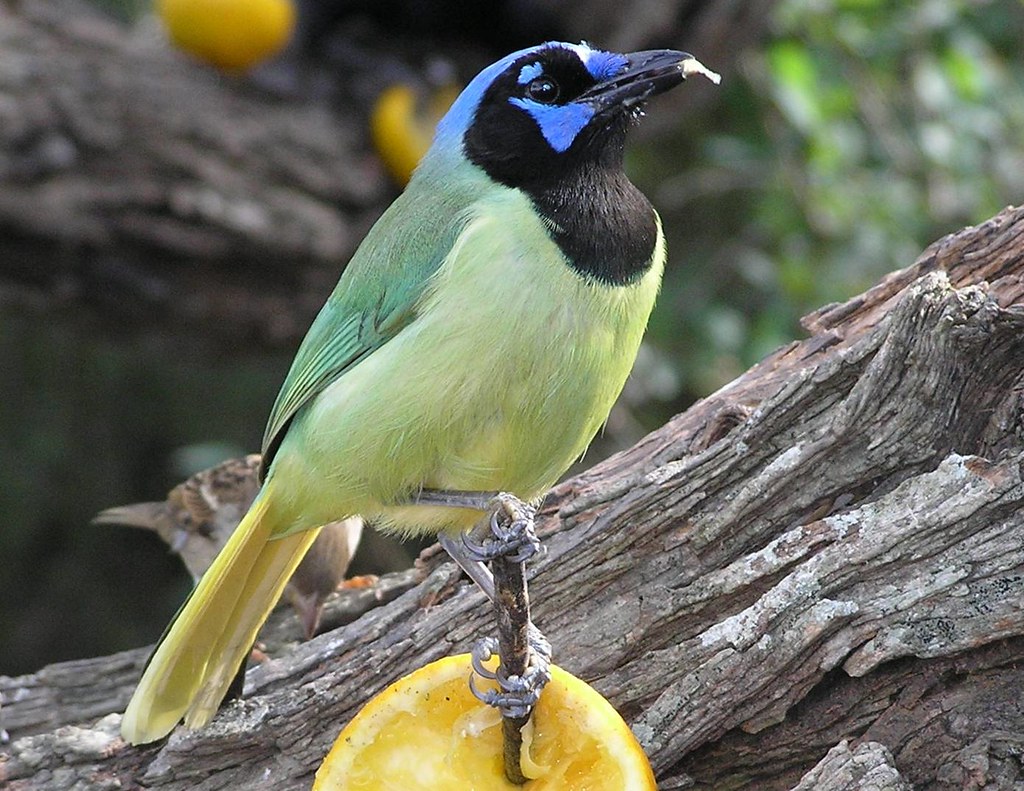
5. **Green Jay**Our journey takes a vibrant turn as we encounter the Green Jay (Cyanocorax yncas), a truly spectacular and colorful member of the jay family. This species is a fantastic mix of bright green, blue, and black, making it one of the most visually striking birds in our collection. It features dark green backs, paler bellies, and bright blue and black heads, a dazzling display of nature’s artistic prowess. Such a bold color scheme makes it a highlight for any birder fortunate enough to spot one, a true high-performance aesthetic statement.
Primarily a tropical species, the Green Jay is a rare find in the United States, typically seen only in southern Texas. However, exciting developments have seen this species expanding its range northward, with sightings now extending to Laredo, Corpus Christi, and even San Antonio, nearly 300 miles north. This rapid expansion, potentially driven by a warming climate, speaks volumes about its adaptability and the dynamic ‘engineering’ of its dispersal mechanisms. Its usual habitat consists of woodlands near streams and water, reflecting its reliance on consistent water sources.
In terms of diet, Green Jays are quite flexible, enjoying a varied menu. At feeders in Texan wildlife refuges and state parks, they are known to enjoy oranges and grape jelly, showcasing a preference for sweet and accessible sustenance. Beyond these cultivated treats, their natural diet includes peanuts, sunflower seeds, corn, as well as a range of insects, fruit, and other seeds. Water is also a big attraction for these birds, highlighting their physiological needs and foraging patterns.
Their vocalizations are as diverse as their plumage, offering a “performance” rich in variety. Green Jays make a range of fast calls that can be ‘Kaw’ like, buzzing, clicking, peeps, and even screams, demonstrating a complex communication system within their social structures. Their nests are relatively simple constructions of twigs, lined with moss, leaves, and grass. Intriguingly, even their eggs can have a greenish tint, an exceptional detail in their reproductive design. A remarkable fun fact is that Green Jays are one of the few birds documented to use tools, employing sticks to pry up bark in their quest for food—a clear sign of their advanced problem-solving capabilities.
Read more about: 15 Mind-Blowing Animal Facts You Absolutely Won’t Believe
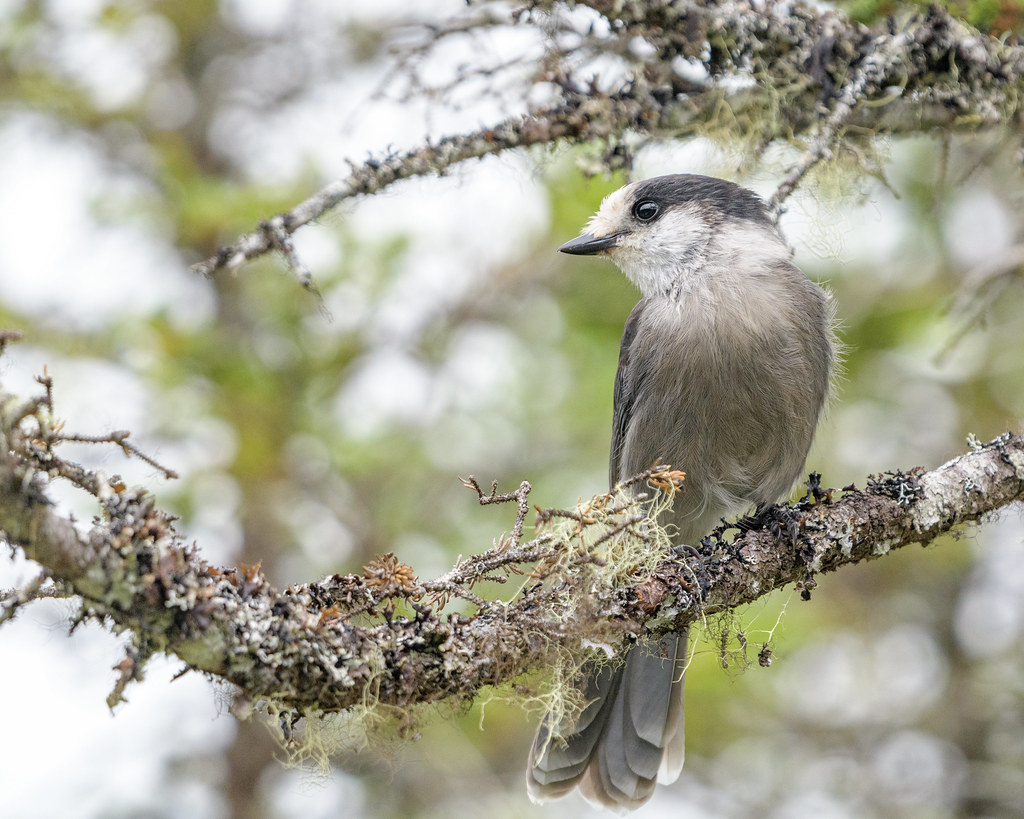
6. **Canada Jay**From the vivid tropics, we journey to the serene, yet challenging, boreal and coniferous forests of the far North and high in the western mountains to meet the Canada Jay, formerly known as the Grey Jay. This species stands apart from other jays, both in appearance and demeanor. Endearingly tame and undeniably cute, these birds are dark gray on the back and a soft pale gray below, with distinctive white heads and throats, framed by a black band running around the back of the head. Juveniles present a darker gray overall, illustrating a developmental progression in their ‘design’.
Canada Jays (Perisoreus canadensis) are resident throughout Canada, Alaska, and the high mountains of the northwest US. They are uniquely adapted to colder climates, even building their nests early in conifers when snow is still on the ground, lining them with feathers for warmth and typically positioning them on the south side of the tree. Their small bills are perfectly suited to twisting off meat, a testament to the precise ‘engineering’ of their foraging tools for their specific diet in harsh conditions.
These birds are famed for their tameness, often approaching hikers, hunters, and campers, and even eating directly from a human hand—a remarkable display of trust and confidence. They are opportunistic feeders, with meat, bread, suet, and other soft foods being highly desirable. Interestingly, while they will visit feeders, nuts and seeds are less appealing to them than the promise of a meaty snack. They are also known for their sophisticated food-caching habits, molding food into sticky blobs with special saliva and sticking them in bark or branches, an ingenious method of resource preservation that differentiates them from species that bury food in soil.
While generally calmer and more silent than their kin, Canada Jays possess a gentle whispered song, contrasted by harsher calls and clatters. They also exhibit the impressive ability to imitate other species’ calls, a versatile vocal ‘performance’. However, beneath their charming exterior lies a deadly side: Canada Jays will kill baby birds for food and even hunt smaller species like chickadees and warblers. This predator-prey dynamic, alongside threats from habitat loss, underscores the complex challenges they face, highlighting the need for conservation efforts to protect these uniquely adapted residents of the northern wilderness.
Read more about: Driving Dreams to Nightmares: 13 Luxury Models That Left Owners Drowning in Financial Regret

7. **Pinyon Jay**Our seventh subject, the Pinyon Jay (Gymnorhinus cyanocephalus), brings us back to the western US states, specifically to the pinyon-pine forests from Montana to Oregon, and south to New Mexico and Arizona. This species presents a uniform blue coloration across its body, with darker backs and paler bellies, and distinct white throats. They are characterized by shorter tails and notably lack the crests seen on other jays like Steller’s, giving them a sleek, efficient ‘design’ for their specific environment.
Alarmingly, the Pinyon Jay is a species in dramatic decline, with an estimated population reduction of 85% since 1970. This critical situation is largely attributed to habitat loss, as much of their crucial tree and shrubby habitat has been converted into grazing lands. This dramatic decline highlights the fragility of specialized ecosystems and the profound impact of human activity on avian ‘performance’ and survival, underscoring the urgent need for conservation efforts to protect these unique birds and their diminishing homes.
Their survival is intricately linked to the pinyon pine nuts, which form the cornerstone of their diet. Pinyon Jays are highly social, roaming in large, noisy flocks primarily to locate these essential nuts. They keep in touch through nasal caws, a distinct vocalization that acts as a cohesive force within their foraging groups. Beyond pinyon pine seeds, their omnivorous ‘engine’ allows them to exploit other food sources, including juniper berries, acorns, and even small animals such as lizards and baby birds, adapting their menu as opportunity dictates. They will also readily accept sunflower seeds, peanuts, corn, and suet at feeders, demonstrating a flexible foraging strategy.
These opportunity feeders are known for their characteristic 3 ‘kaw’ like calls, delivered close together, which rise and then fall, sometimes with a shaky or trembling quality. Their nests, constructed of sticks and grass in pine trees and lined with feathers and animal hair, are built for practicality and warmth. A unique anatomical ‘design’ feature of the Pinyon Jay is the absence of feathers over their nostrils, a clever adaptation that prevents the sticky pine pitch from fouling them, allowing for efficient foraging in their conifer-rich environment. This exemplifies the minute details of their evolutionary fine-tuning.
Read more about: The Curated Collection: Unpacking North America’s Most Distinctive Jay Species – An Exclusive Ornithological Showcase

8. **Florida Scrub-Jay**The Florida Scrub-Jay (Aphelocoma coerulescens) is an avian marvel that, much like a limited-edition performance model, is found exclusively within its specialized ‘track’—the scrub habitats of Florida. These distinct birds present a visual profile characterized by striking blue plumage, offset by gray bellies, backs, and foreheads, culminating in long blue tails. Notably, they operate without the high-profile crests seen in some other jays, offering a sleek, aerodynamic ‘design’ perfectly adapted to their unique environment.
However, this exclusive ‘model’ faces significant challenges. The Florida Scrub-Jay is tragically listed as a federally recognized endangered species, a stark reminder of habitat loss, as their scrub oak homelands are slowly disappearing or being fragmented by housing developments. This pressing conservation status underscores the urgent need for ‘maintenance’ and protection to ensure the continued ‘performance’ of this vital species within Florida’s fragile ecosystems.
Their operational strategy revolves heavily around acorns, which form the cornerstone of their diet. A single Florida Scrub-Jay, much like a high-capacity storage system, may cache an astonishing 6,000 or more acorns annually, demonstrating an exceptional level of foresight and resource management. To augment their natural foraging, feeders stocked with peanuts serve as crucial ‘fuel stations,’ helping to sustain these intelligent birds, especially during lean times. They are often observed on the ground, meticulously searching for insects and berries, showcasing a versatile ‘terrain’ capability.
These jays are highly social, forming cooperative flocks that often include young from previous years. This intricate social ‘network’ serves a dual purpose: it provides collective protection against predators and ensures shared feeding duties for hungry nestlings. Their nests, typically found in oak trees or shrubs, are meticulously constructed to house their growing families, a testament to their precise ‘engineering’. While their calls are described as quite harsh, they spend a significant amount of time communicating with each other, reflecting their strong community bonds and active ‘communication system’.
Read more about: The Curated Collection: Unpacking North America’s Most Distinctive Jay Species – An Exclusive Ornithological Showcase

9. **Black-throated Magpie-Jay**Prepare to be captivated by the sheer visual drama of the Black-throated Magpie-Jay (Calocitta colliei), a species that truly embodies a high-performance aesthetic with its long, elegant tail and commanding presence. This magnificent bird is instantly recognizable by its conspicuous black crest and a dark throat that provides a striking contrast against a patch of vibrant blue on its eyebrows and under the eye. Its blue wings, white-tipped tail, and pristine white underside complete a design that is both bold and sophisticated, reminiscent of a luxury vehicle’s striking livery.
This impressive ‘machine’ operates primarily in tropical lowland forests, plantations, and partially open areas, preferring locales with tall trees and hedges that provide both shelter and prime foraging opportunities. However, it’s worth noting that this species is not particularly fond of humid woodlands, highlighting a specific environmental ‘tuning’ that dictates its preferred operational zones. Its geographical range extends across Mexico, showcasing its adaptation to diverse Central American landscapes.
As a true member of the crow family, the Black-throated Magpie-Jay boasts an omnivorous ‘engine,’ capable of processing both plant and animal matter. While it exhibits a fondness for seeds and nuts—much like a high-octane fuel for optimal performance—it is also known to effectively ‘hunt’ and consume insects and other smaller birds. Its unique feeding posture, standing tall with one foot holding the food and the other carefully placing it into its mouth, showcases an efficient and refined method for sustenance.
Their nests, typically constructed from sticks and twigs, are meticulously lined with soft materials and can hold up to seven eggs, a testament to their robust ‘construction’ and reproductive capacity. While specific vocalizations are indicated, the general characteristics of jays suggest a varied acoustic ‘performance’. The Black-throated Magpie-Jay’s imposing size and striking design make it an unforgettable encounter for any enthusiast fortunate enough to witness it in its natural habitat, a true testament to nature’s diverse and captivating engineering.
Read more about: The Curated Collection: Unpacking North America’s Most Distinctive Jay Species – An Exclusive Ornithological Showcase
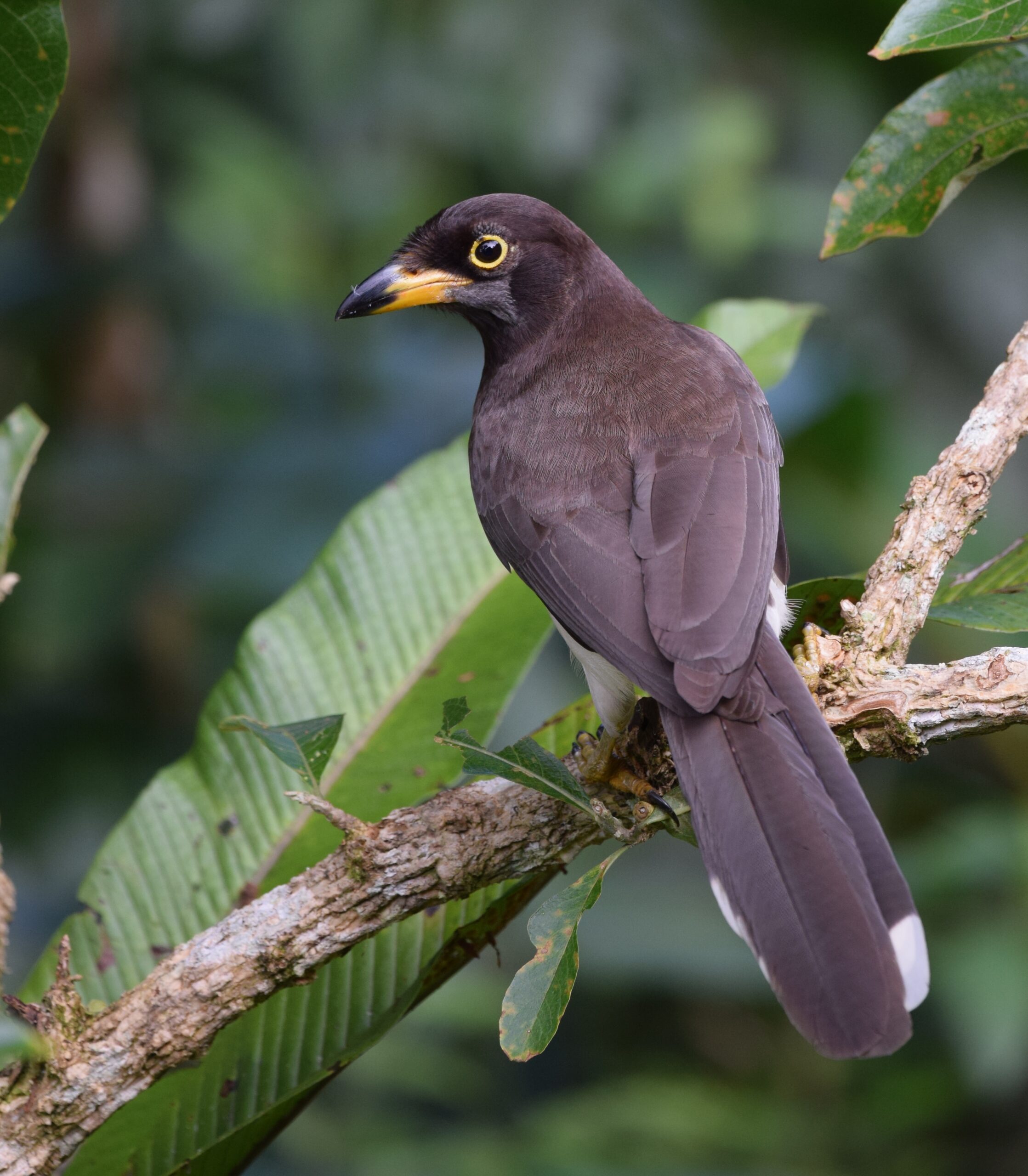
10. **Brown Jay**Next in our expedition is the formidable Brown Jay (Psilorhinus morio), a species that, with its robust build and commanding size, could be considered the heavy-duty model of the North American jay family. These large birds exhibit a remarkably varied ‘paint job,’ ranging from entirely dark brown with a lighter tint on the back to some southern species flaunting white bellies and distinctive white tips on their tail feathers. The striking contrast between the black bills, legs, and feet of adults and the vibrant yellow legs and eyering of juveniles further accentuates their dynamic developmental design.
The Brown Jay is predominantly a denizen of Mexico and Central America, yet it extends its operational range northward, making a notable appearance in southern Texas. These birds prefer the dense woodland environments, particularly those adorned with tall trees and situated conveniently near water sources, indicating a specific ‘habitat preference’ that influences their distribution and survival. Their adaptability to such environments showcases a robust and resilient ‘chassis’ capable of navigating diverse forest terrains.
As omnivores, Brown Jays are equipped with a versatile ‘power train’ that allows them to thrive on a wide array of food sources. Their diet includes insects and rodents, demonstrating a predatory capability, alongside a more common intake of berries, fruits, seeds, and nectar. They are adept at foraging on the ground, meticulously scanning for edibles, but are equally comfortable hopping from branch to branch in the canopy, showcasing a flexible ‘mobility system’ for resource acquisition.
Intriguingly, Brown Jays operate within a communal social structure, sharing the responsibilities of nest building and raising young. Flocks construct communal nests, typically situated in a forked branch of a tree or a low-lying shrub. These nests, crafted from sticks and twigs and lined with soft materials, are designed to accommodate up to eight eggs, which hatch after approximately twenty days. The young, after about four weeks, embark on their independent ‘journeys’, but the collective support highlights a sophisticated social ‘engineering’ within the species. As the largest North American Jay, the Brown Jay truly commands attention, embodying a blend of power and cooperative spirit.
Read more about: Jay North, the Enduring Spirit of ‘Dennis the Menace’ Star, Dies at 73: A Comprehensive Look at His Tumultuous Journey and Lasting Impact

11. **Mexican Jay**Journeying into the elevated landscapes of Arizona, New Mexico, and Texas, we encounter the Mexican Jay (Aphelocoma wollweberi), a species whose refined aesthetics and cooperative ‘performance’ distinguish it within the corvid family. These medium-sized birds present a delicate palette of pale bluish-gray, a lighter hue compared to many of their more vibrantly colored relatives, accentuated by a grayish upper neckline and chest. Their small, black bill completes a profile of understated elegance, lacking the pronounced crests of some other jays, a testament to a streamlined, efficient design.
The Mexican Jay finds its ideal operational terrain in open oak and pine woods and forests, thriving in these temperate mountainous environments. Unlike many species that disperse during breeding season, Mexican Jays maintain cohesive groups even at nesting time, showcasing a unique social ‘architecture’. This communal approach extends to their parental duties, where they share feeding responsibilities for their hungry nestlings, highlighting an advanced cooperative breeding strategy.
Their dietary ‘engine’ is primarily insectivorous and reptilian during warmer months, with a preference for insects, small reptiles, and even the eggs and young of other birds, demonstrating their opportunistic predatory capabilities. As winter descends, their menu shifts strategically to stored acorns and pine nuts, a testament to their meticulous caching habits during the preceding seasons. This foresight in resource management ensures their survival through colder periods, a hallmark of intelligent avian ‘engineering’.
Mexican Jays communicate through distinctive vocalizations, most notably their nasal wink calls, which serve as crucial elements in maintaining group cohesion and conveying important information within their social ‘network’. Both males and females collaborate in constructing their nests, carefully built with sticks and twigs and lined with rootlets and plants, strategically protected by thick leaves within trees. The remarkable observation that Northern Flickers often follow Mexican Jays during migration, utilizing their loud, shrill voices as an early warning system against predators, further underscores the Mexican Jay’s vital role as an environmental ‘sensor’ and its significance within its ecosystem.
Read more about: Driving Dreams to Nightmares: 13 Luxury Models That Left Owners Drowning in Financial Regret
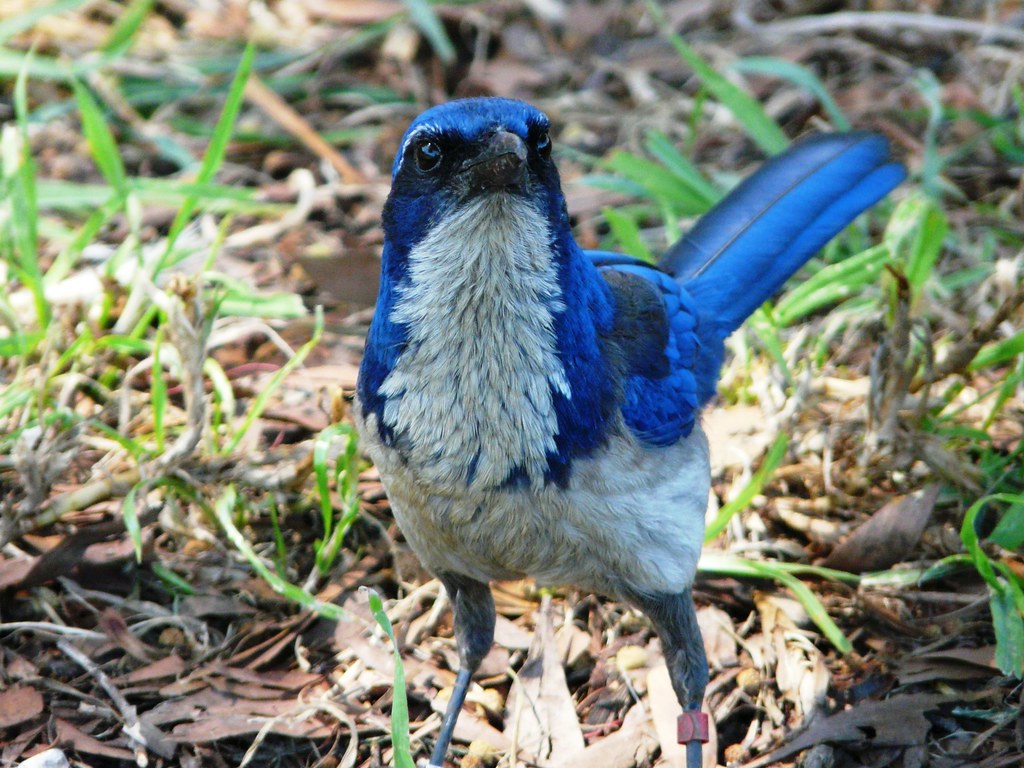
12. **Island Scrub Jay**Our expedition takes us to an exclusive, singular location: Santa Cruz Island, off the coast of California, where the unique Island Scrub Jay (Aphelocoma insularis) resides. This remarkable species, much like a limited-production performance model designed for a specific terrain, is a permanent resident of this island and does not migrate, making it the North American bird with the smallest geographical range. Visually, these are large, brightly-colored birds, akin to their mainland relatives, the California Scrub-Jays, yet possessing darker and more richly-colored feathers, showcasing a distinctive, intensified ‘design’ for their isolated environment.
Their plumage boasts a rich blue from head to tail on the back, contrasted by gray on top of their wings and stark white throats. This specific coloration, combined with their robust build, allows them to blend seamlessly into the island’s dominant oak woodland and chaparral, which also features several streamside thickets and other trees. Their specialized existence on Santa Cruz Island emphasizes the critical importance of conserving this unique habitat, as the fate of the Island Scrub Jay is inextricably linked to the health and preservation of its isolated home.
The Island Scrub Jay’s ‘power plant’ is versatile and highly adapted to island resources. Their diet primarily consists of insects, small lizards, and mice, demonstrating an efficient predatory capability, supplemented by the eggs and young of other smaller birds. As fall approaches, their foraging strategy shifts to a feast on acorns, which they skillfully break open with their strong beaks, showcasing a precision ‘tool use’ for sustenance. This adaptability to seasonal changes in food availability is crucial for their survival within the confines of their island home.
Nests of Island Scrub-Jays are ingeniously hidden within oak trees, sturdy constructions of twigs lined with rootlets and animal hair, providing a soft and secure environment for their young. They typically lay around four eggs, which hatch after approximately eighteen days, a testament to their dedicated reproductive ‘engineering’. While data on when the young leave the nest is limited, their continued presence on Santa Cruz Island is a powerful testament to their resilience and specialized adaptation, making them a truly exceptional subject in our study of avian design and performance.
Read more about: The Curated Collection: Unpacking North America’s Most Distinctive Jay Species – An Exclusive Ornithological Showcase
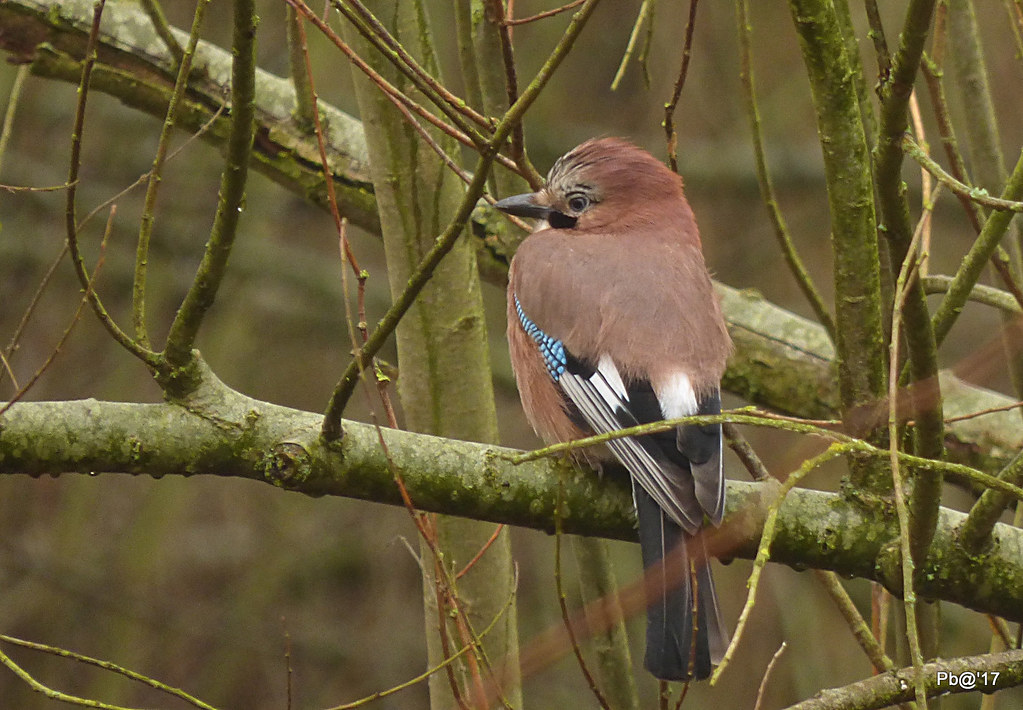
13. **Eurasian Jay**Shifting our focus across the Atlantic, we encounter the Eurasian Jay (Garrulus glandarius), a captivating ‘model’ that reigns supreme across most of the continental Old World. This species, a vibrant counterpart to its New World relatives, presents a distinctive aesthetic profile: a handsome pinkish-brown body, beautifully complemented by blue-and-black-barred shoulders, a crisp white rump, and striking white wing-patches. Its overall appearance, though differing from the blues of American jays, is unmistakably bold and elegant, a testament to nature’s diverse design philosophies.
The Eurasian Jay is an ecological workhorse, playing an essential role in the health of its varied ecosystems. Much like a finely-tuned ‘utility vehicle’, its diet is remarkably broad, ranging from its beloved acorns—which it meticulously stores for winter use—to a wide array of seeds, nuts, and small animals. This omnivorous ‘engine’ allows it to adapt to diverse food sources, highlighting its resilience and opportunistic foraging capabilities across its extensive range, which spans most of Eurasia.
Beyond its physical attributes and dietary prowess, the Eurasian Jay is a master of acoustic ‘performance’. It is renowned for its ability to mimic a vast array of sounds, including the calls of other bird species and even human noises, demonstrating an impressive vocal versatility. This talent for imitation, combined with its inherent bold and raucous manner, makes it a prominent and easily identifiable presence in the woodlands it inhabits, often announcing its presence with a distinctive series of calls.
These jays construct twiggy, cup-like nests high within trees, showcasing a practical and sturdy ‘architectural design’ for raising their families. After the breeding season, most species of Eurasian Jays become gregarious, forming social groups that enhance their foraging efficiency and provide collective security. Their intelligence, coupled with their vibrant plumage and crucial ecological role in seed dispersal, solidifies the Eurasian Jay’s position as a truly remarkable and significant member of the global corvid family.
Read more about: From Brilliant Blues to Stealthy Greys: Uncovering the Enduring Legacy of the Jay Family Across North America and Beyond

14. **White-throated Magpie-Jay**Stepping back into the dynamic landscapes of Central America, we are introduced to the White-throated Magpie-Jay (Calocitta formosa), a species that, much like an exotic, high-performance ‘tourer’, commands attention with its vibrant blue plumage and striking white throat. Native to a region spanning Mexico, Guatemala, and Honduras, this bird is a living testament to flamboyant design and intricate social dynamics. Its long, flowing tail and overall elegant silhouette contribute to an unmistakable visual presence within its tropical habitat.
These birds are primarily found in various forest types, ranging from humid lowlands to more arid regions, showcasing a remarkable adaptability in their choice of ‘operating environment’. They frequently inhabit plantations and partially open areas, utilizing tall trees and hedges for nesting and foraging. The White-throated Magpie-Jay’s ability to thrive across such diverse habitats highlights its robust ‘engineering’ and capacity to navigate a wide spectrum of ecological conditions.
The White-throated Magpie-Jay is equipped with a highly versatile ‘fuel system’, reflecting its omnivorous nature. Its diet encompasses a rich variety of food sources, including succulent fruits, various insects, nutrient-rich seeds, and even small vertebrates, demonstrating its predatory prowess. This broad dietary spectrum ensures its sustained ‘performance’ and survival within its lush Central American territories, adapting its foraging strategies to seasonal availability.
A key aspect of their ‘social engineering’ is their tendency to live in family groups, fostering strong communal bonds. Within these groups, they construct elaborate nests high in tree canopies, showcasing a sophisticated ‘architectural design’ for their communal living. Known for their loud calls, these jays communicate vividly and constantly within their groups, maintaining cohesion and announcing their presence with a distinct vocal ‘signature’. The White-throated Magpie-Jay truly embodies the vibrant and complex life found within the tropical bird world, a masterclass in avian performance and design.
Read more about: From Brilliant Blues to Stealthy Greys: Uncovering the Enduring Legacy of the Jay Family Across North America and Beyond

15. **Plush-crested Jay**Our final subject, the Plush-crested Jay (Cyanocorax chrysops), emerges from the verdant depths of the Amazon Rainforest, a region synonymous with unparalleled biodiversity. This species is a true showstopper, distinguished by its vibrant blue body and a prominent, fluffy crest that gives it its evocative name. This striking crest, coupled with its overall brilliant blue plumage, offers a visually arresting ‘design’ that is both unique and instantly recognizable amidst the rich green canopy of its habitat.
The Plush-crested Jay is a denizen of the diverse ecosystems of the Amazon, an environment that demands both adaptability and resilience. These social birds are frequently observed in pairs or small groups, showcasing their cohesive social ‘mechanisms’. Their ability to navigate the complex arboreal environment and thrive in such a rich ecological niche speaks volumes about their finely-tuned ‘performance’ and specialized adaptations to rainforest life.
Their ‘power unit’ is an omnivorous one, allowing them to exploit a wide array of food sources available in the Amazon. Their diet includes a healthy mix of fruits, various insects, an assortment of seeds, and even small vertebrates, demonstrating a flexible foraging strategy. This dietary versatility is crucial for their survival in an environment where food availability can fluctuate, ensuring their sustained ‘operation’ and ecological success.
Beyond their stunning appearance, Plush-crested Jays play a critical role as important seed dispersers within the Amazon ecosystem. By consuming fruits and then distributing their seeds across wider areas, they act as vital ‘ecological engineers’, contributing significantly to forest regeneration and biodiversity. They communicate with a variety of calls, adding to the rich acoustic tapestry of the rainforest. The Plush-crested Jay stands as a magnificent example of avian beauty, ecological importance, and the intricate design that characterizes the world’s most vibrant bird species.
From the bold Blue Jay that graces our eastern backyards to the exclusive Island Scrub Jay inhabiting a single Californian island, and the exotic Plush-crested Jay soaring through the Amazon, the world of jays is a masterclass in nature’s diverse engineering and design. Each species, a meticulously crafted ‘model’ in its own right, showcases incredible adaptations, complex social structures, and stunning visual appeal. As we’ve journeyed through this avian ‘treasure trove,’ it becomes clear that these intelligent and often noisy members of the Corvidae family are far more than just birds; they are vital components of their ecosystems, each performing a unique role. So, the next time you spot a flash of blue, green, or gray, take a moment to appreciate the intricate ‘mechanics’ and captivating ‘performance’ of these extraordinary feathered marvels, a true testament to evolution’s ingenuity.



